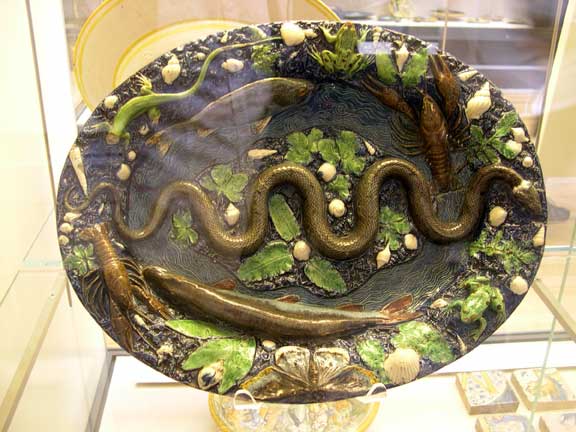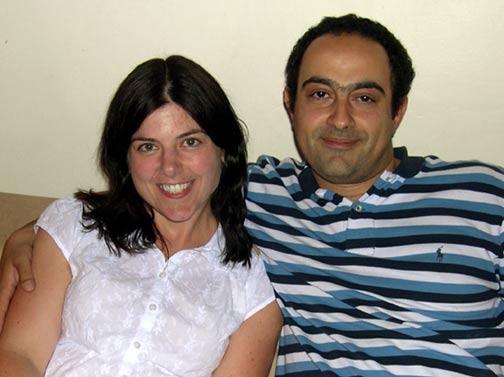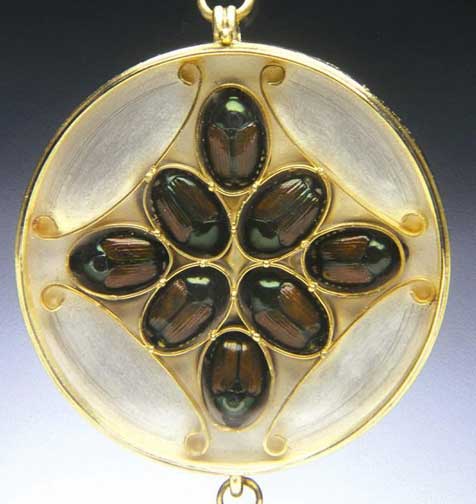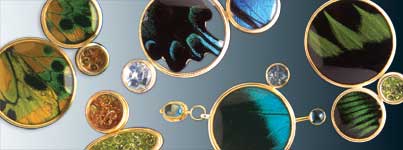Lead-glazed polychrome-painted earthenware dish
Workshop of Bernard Palissy, Paris, circa 1575-1600
British Museum
Just in case you didn’t find Laura Zindel’s creepy-crawly place settings unusual enough, here’s a treasure from the British Museum: an antique dish embellished with sculpted snake, insects, crayfish, and frogs.
I can’t help but wonder what you’d eat off such a plate. Would the snake’s head poke invitingly from a pile of pasta? It’s just not right! Yet Palissy was hugely popular in his own time (clients included European royalty and the Medicis) and his work enjoyed an even greater resurgence in the Victorian era.
Palissy was also an intuitive paleontologist. His observations of geology and hands-on experience making casts of natural specimens convinced him that fossils were impressions of plants and animals:
I at length found more fishes and shells in that form, petrified upon the earth, than there are modern kinds inhabiting the ocean, for which reason I have been bold enough to say to my disciples that Monsieur Belon and Rondelet had taken pains to describe and figure the fishes found by them during a voyage to Venice, and that I considered it strange that they never troubled themselves to understand the fishes that formerly dwelt and multiplied abundantly in regions of which the stones, that have congealed at the same time when they were petrified, serve now as register or original of the forms of the said fishes. (Palissy the Potter: The Life of Bernard Palissy, by Henry Morley)
Palissy’s insight aligns him with da Vinci, who also grasped the formation of fossils well ahead of the scientific pack.
Similar snake dishes by Palissy or his followers are found at the Fitzwilliam Museum and the Met. Apparently the Victoria & Albert have a number of Palissy pieces as well; I’ll be keeping an eye out for them later this week when I’m in South Kensington.
Update: here’s the Palissy plate they have at V&A.





